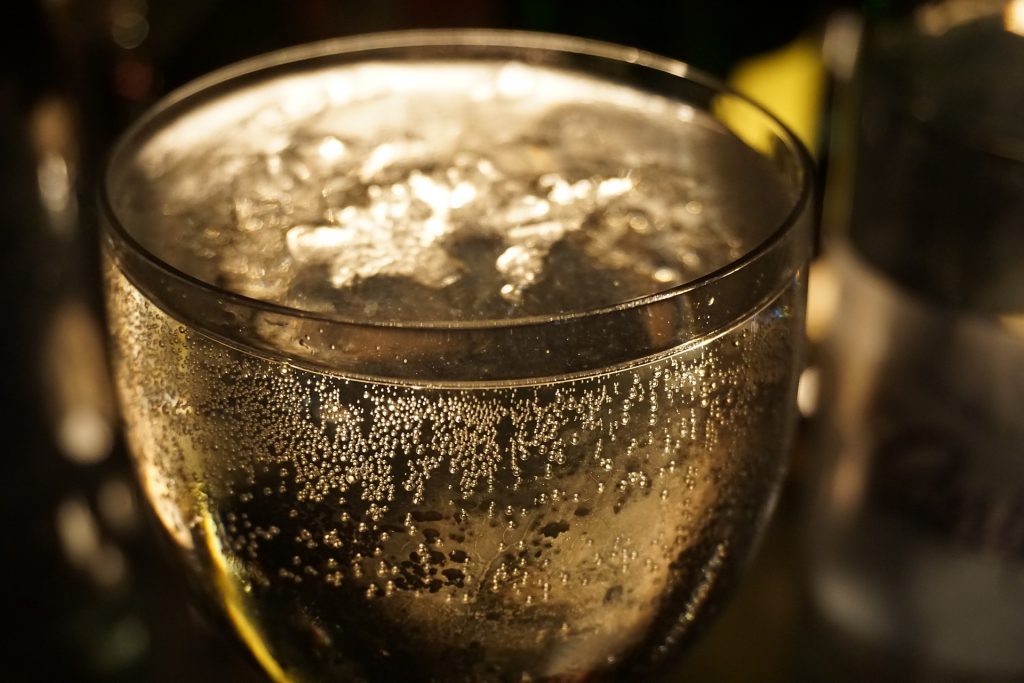Christmas and New Years are right around the corner meaning one very exciting thing — it’s solidly champagne season. We associate the pop of the cork and those sparkling flutes with fun and celebration. But while you may want to down a glass, or two… or three, over the holidays, sometimes all of those choices at the store can be confusing.
If you’ve ever hit the wine store and didn’t know what to buy, or feel like an amateur this time of year in the alcohol department, read on for a beginners guide to shopping for champagne.
Remember, whichever you choose, make sure it’s in a dark bottle to help keep light away and preserve the intended flavors of the drink inside, but relax. It’s champagne! And no one should ever take a drink this fun and fizzy too seriously.
Also see, Tips to prevent a champagne hangover.
Step 1: know the different types of bubbly
So many choices! Where to begin? To get started, you need to know the difference between common fizzy favorites.
Champagne: First off, it’s worth noting that Champagne is the name exclusively given to sparkling wines made in the Champagne region of France. Legitimate Champagne must follow a strict set of rules and winemaking techniques to qualify. The rest of the stuff, is just sparkling wine. All Champagne must be made from traditional Champagne grapes (chardonnay, pinot noir, and pinot meunier). Between Champagne, Prosecco and Cava, this is the least sweet and has the tiniest bubbles. A good bottle will cost as low as $25-30.
Cava: This Spanish sparkling wine is is similar to Champagne, but it uses less expensive grapes (Macabeu, Xarello, and Paralleda), which helps to lower the cost. It is typically sweeter than Champagne but not as sweet as Prosecco. Cava has bubbles that are finer than Procecco but larger than Champagne. If you’re looking for a Champagne alternative, you might be surprised to learn Cava is much closer in production and taste than Prosecco. A good bottle can run as low as $11-15.
Prosecco and Spumante: Prosecco and Spumante are from Northeast Italy made using the Charmat method. This means they’re fermented in tanks first and then bottled, as opposed to Champagne and Cava which are fermented inside the individual bottles. Prosecco is generally sweeter than Champagne or Cava, but Spumante is the sweetest of all. A good bottle of either can run as low as $11-14.
Cremant and Blanquette: Two specific sparkling wines from France that both predate Champagne. Both undergo a secondary fermentation in the bottle, but still cost much less than champagne. A good bottle can run as low as $15.
Sparkling Wine: Sparkling wine has been a catch-all term for all kinds of fizzy wines that don’t follow any particular set of wine making rules. These can come from anywhere — California to Switzerland to Australia, and can be made of any grape, have any flavor, and land at any price point. California’s sparkling wines are often made using the Champagne method, but aren’t subject to Champagne’s strict regulations.
Step 2: identify your sweet tooth
Sugar is added to all sparkling wines to help level out acidity. Know what you’re eating or at least what your pallet prefers to select a bubbly you’ll love. If you’re unsure, experts recommend matching the dish, so choose a sweet variety for dessert or a more acidic variety for salads. If you’re just swigging it for fun on New Years Eve, it’s entirely up to you, but Brut is a popular choice since many finger foods are savory.
Brut, Extra Brut, Natural Brut: These are the dry choices that can pair well with anything from pizza to crab cakes.
Demi-Sec, Sec, Extra Dry, and Extra Sec: These are still relatively sweet, but not too sweet for many food or sweet lovers.
Doux: These will have the sweetest taste.
Step 3: identify the tier
Classic is the entry level.
Reserve means it has a little age.
Prestige means it’s been made with top-of-the-line grapes.
Also see, 19 Fun Facts about Champagne.







